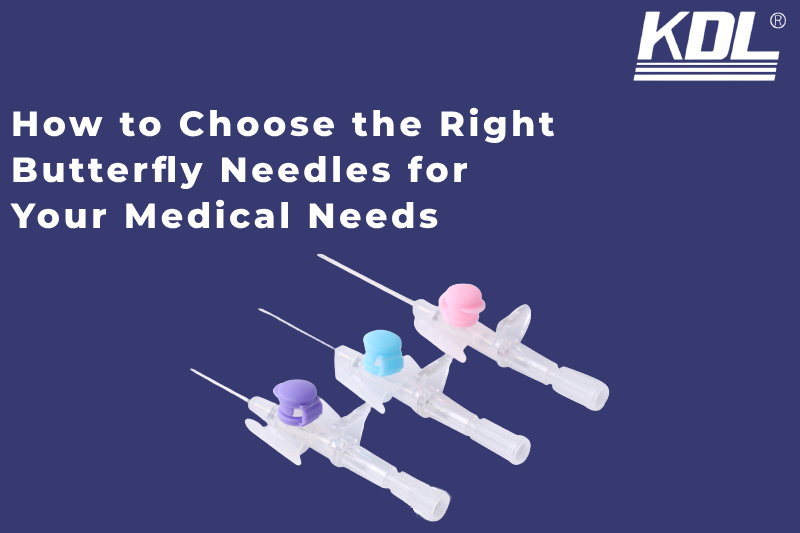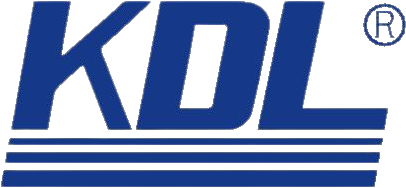
What are Butterfly Needles?
At first glance, a butterfly needles may appear as a delicate instrument, but its construction is far from simple. Comprising a slender stainless steel shaft with a hub on one end and a pair of flexible wings on the other, this needle epitomizes precision. The needle’s fine gauge, usually 21-27G, ensures minimal trauma during insertion, making it an ideal choice for patients with fragile veins.
The wings of the butterfly needle serve a dual purpose, providing stability during venipuncture and acting as a handle for the healthcare professional. Attached to the hub, these wings allow for precise control and manipulation of the needle, a crucial factor when dealing with intricate procedures.
Applications of the Butterfly Needles
Butterfly needles find their niche in the medical field as indispensable instruments for venipuncture, a procedure involving the puncturing of veins to obtain blood samples or administer medications and fluids directly into the bloodstream. This refined needle apparatus excels in situations where precision and minimal tissue damage are paramount. Its primary applications encompass blood draws, intravenous injections, and the collection of diagnostic samples. Moreover, butterfly needles are often prefer for patients with fragile or small veins, as they reduce the risk of bruising and discomfort..
How Butterfly Needles Are Used
The art of utilizing butterfly needles demands a deft hand and a profound understanding of the human vascular system. To commence, the healthcare provider disinfects the chosen venipuncture site and identifies the optimal vein. The butterfly needle, held like a pen for precision, is then gently inserted into the vein, securing access to the bloodstream. The wings of the needle play a pivotal role in maintaining stability during this delicate process. Once in position, blood can be drawn or medications and fluids administered with remarkable accuracy.
When to use Butterfly Needles

A butterfly needle, also known as a winged infusion set or scalp vein set, is a type of medical needle commonly used for venipuncture and intravenous (IV) access. It consists of a thin, flexible tube (catheter) attached to a set of “wings” that allow for better control and maneuverability during insertion. Butterfly needles are typically use in specific situations when a regular needle may not be as suitable.
Here are some situation in which you might choose a butterfly needles
Difficult Vein Access
When a patient has small, fragile, or difficult-to-access veins, such as in pediatric or older age patients, or individuals with chronic medical conditions, a butterfly needle may be used because of its smaller gauge and flexibility.
Small Volume Blood Draws
Butterfly needles are often used when a relatively small volume of blood needs to be drawn for diagnostic tests or monitoring purposes, such as for routine blood work.
Short-Term Intravenous Access
Butterfly needles use for short-term IV access when a peripheral IV line is necessary for a short duration, such as administering a single dose of medication or hydration.
Delicate Areas
They are suitable for areas with delicate or sensitive skin, like the back of the hand or the scalp, as they minimize discomfort and tissue trauma.
Phlebotomy Training
Butterfly needles are commonly use in phlebotomy training programs to teach students venipuncture techniques due to their ease of use and reduced risk of complications.
Pediatrics
Butterfly needles are often prefer for pediatric patients because of their smaller size and reduced risk of discomfort.
Geriatrics
In Geriatrics patients with fragile veins, a butterfly needle may be the best option to minimize complications.
Frequent Blood Draws
Patients who require frequent blood draws, such as those undergoing chemotherapy, may benefit from the use of butterfly needles to reduce discomfort and damage to their veins over time.
It’s important to note that butterfly needles have a smaller gauge (typically 21 to 25 gauge) compared to standard venipuncture needles, so they may not be suitable for all situations. The choice of needle and technique should be made by a trained healthcare professional base on the patient’s specific needs and the intended use. Additionally, proper aseptic technique should always be follow when using any type of needle to prevent infection and complications.
Advantages of Using a Butterfly Needles
Using a butterfly needle, also known as a winged infusion set or scalp vein set. Choosing a butterfly needle over conventional options offers several distinct advantages.
1. Reduced Patient Discomfort
Butterfly needles are typically smaller in gauge size (typically 21-27 gauge) compare to standard needles, which means they are thinner and cause less tissue damage. This results in reduced pain and discomfort for the patient during venipuncture.
2. Improved Vein Visibility
The butterfly needle’s flexible tubing and small, butterfly-shaped wings allow for better control and visibility of the insertion site. This is especially beneficial when dealing with small or fragile veins, making it easier to locate and access the vein.
3. Less Risk of Hematomas
Due to their smaller size and design, butterfly needles are less likely to cause hematomas or bruising at the injection site. This is crucial for patients who require frequent blood draws or intravenous (IV) access.
4. Accurate Blood Draws
Healthcare professionals can achieve precise blood draws, which is vital for diagnostic tests, monitoring specific parameters, or collecting blood for various medical procedures.
5. Reduced Risk of Infiltration
The wings of the butterfly needle provide stability during the procedure, reducing the risk of vein infiltration, where the needle punctures through the vein wall.
6. Ideal for Pediatric and Geriatric Patients
Butterfly needles are particularly useful for pediatric and geriatric patients, as they are less intimidating due to their smaller size and cause less discomfort during venipuncture.
7. Flexibility and Maneuverability
The flexible tubing of a butterfly needle allows for better maneuverability, making it easier for healthcare professionals to access veins in hard-to-reach areas.
8. Decreased Needlestick Injuries
Butterfly needles often have safety features, such as retractable needles or easy-to-activate safety shields, which reduce the risk of accidental needlestick injuries for healthcare workers.
9. Use in Delicate Procedures
They are suitable for delicate procedures like IV cannulation, arterial blood gas sampling, and administering medications that require precise control.
Improved Patient Comfort During Prolonged Infusions: When administering prolonged infusions or medications, patients may find butterfly needles more comfortable due to their design and reduced trauma to the vein.
10. Easier to Control Flow Rate
The smaller bore of butterfly needles allows for better control of the flow rate during infusions, ensuring that medications or fluids are administered at the correct rate.
11. Compatibility with Multiple Luer Lock Devices
Butterfly needles often have Luer lock connectors, making them compatible with various medical devices and reducing the need for additional adapters.
In summary, the use of a butterfly needle offers several advantages, including increased patient comfort, improved vein visibility, reduced risk of complications, and enhanced control during medical procedures. These advantages make butterfly needles a valuable tool in healthcare settings, especially when dealing with patients of different ages and with various medical needs.
Summary
In the intricate tapestry of medical tools and instruments, butterfly needles stand out as delicate yet indispensable components. Their purpose, to facilitate precise venipuncture for blood collection and IV administration, makes them a cornerstone in various clinical settings.
With a variety of types to suit specific needs, these needles combine precision and minimally invasive design, offering a plethora of advantages while acknowledging certain limitations. A thorough understanding of butterfly needles and their applications is essential for healthcare providers, ensuring safe and effective patient care in the ever-evolving landscape of medicine.
 +86-791-8686-1216
+86-791-8686-1216 

